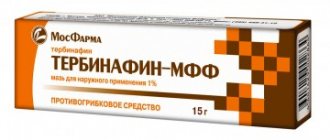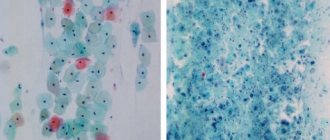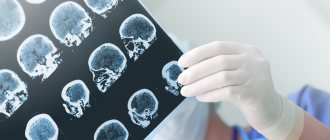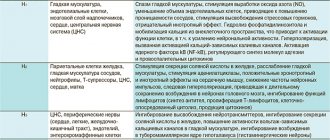Antitumor drugs frighten cancer patients with the unpredictability of positive and frequent negative effects. Most patients would prefer to opt for surgery or radiation, but these strictly local methods are not always technically possible. All tumor foci can be systematically affected only by drugs, since they penetrate wherever there is blood, regardless of the method of administration.
- What are anticancer drugs and how do they work?
- Classification and types of antitumor drugs
- Alkylating agents
- Antitumor drugs of plant origin
- New generation anticancer drugs
- Hormone-based drugs
- Side effects
What are anticancer drugs and how do they work?
All drugs that kill malignant cells can be called antitumor drugs, despite the significant heterogeneity of drug molecules and the mechanism of damaging action. Most anticancer drugs affect cell division by disrupting the structure of their DNA or spindle, which helps separate chromosomes into resulting daughter cells. It is likely that cytostatics damage not only the genome; their effect is best studied by the formation of cross-links between parts of one DNA strand and two parallel strands braided into a spiral. The cell has ways to restore minor damage to the genetic apparatus, but if there is a significant violation, it is forced to go towards apoptosis - death.
Cell populations in a tumor node are very heterogeneous: some cells are just about to divide, others have already entered the process and are actively synthesizing two copies of structures for the daughter cell, some are at rest, and some, after completing the life program, rush to death. It is believed that quiescent cell populations are resistant to the aggression of anticancer drugs, but those dividing and planning to enter this phase are the most sensitive to chemotherapy. Dividing cells make up the fraction of tumor growth; the larger it is, the more aggressive the cancer and at the same time more sensitive to antitumor effects.
Book a consultation 24 hours a day
+7+7+78
Types of Cancer Growth Inhibitors
Anticancer drugs - tyrosine kinase inhibitors
Tyrosine kinase inhibitors are also called TKIs. They block enzymes called tyrosine kinases. These enzymes help transmit growth signals to cells. Thus, cell growth and division are prevented. One type of tyrosine kinase or several may be blocked. TKIs that affect several types of enzymes are called multi-inhibitors.
TKIs that are used in medical practice, as well as in clinical trials:
- Afatinib (Giotrif)
- Axitinib (Inlyta)
- Bosutinib (Bosulif)
- Crizotinib (Xalkori)
- Dasatinib (Sprycel)
- Erlotinib (Tarceva)
- Gefitinib (Iressa)
- Imatinib (Gleevec)
- Lapatinib (Tyverb)
- Nilotinib (Tasigna)
- Pazopanib (Votrient)
- Regorafenib (Stivarga)
- Sorafenib (Nexavar)
- Sunitinib (Sutent)
These drugs are taken in tablets or capsules, usually once or twice a day.
Antitumor drugs - proteasome inhibitors
Proteasomes are tiny barrel-shaped structures found in all cells. They help break down proteins that the cell does not need into smaller parts. These proteins are then used to create new, essential proteins. The work of proteasomes is blocked by proteasome inhibitors. This causes unwanted proteins to accumulate in the cell, leading to cell death.
Bortezomib (Velcade) is a proteasome inhibitor used in the treatment of melanoma. It is injected into the body intravenously.
Anticancer drugs - MTOR inhibitors
MTOR is a type of protein called a protein kinase. It influences cells to make chemicals called cyclins, which promote cell development. In addition, they promote the synthesis of proteins by cells, which provoke the development of new blood vessels, which are necessary for tumors.
Some types of mTOR protein simultaneously promote the growth of malignant cells and the creation of new blood vessels. Inhibitors of such proteins are innovative drugs that block the growth of the tumor process. Inhibitors of this protein include:
- Temsirolimus (Torisel)
- Everolimus (Afinitor)
- Deforolimus
Anticancer drugs - PI3K inhibitors
PI3K (phosphatidylinositol 3-kinase) is a group of closely related protein kinases. They perform several actions in cells. For example, they activate other proteins - for example, mTOR. Activation of PI3K leads to cell growth and division, development of blood vessels, and helps cells move.
In some types of cancer, PI3K is constantly activated, which means the cancer cells grow uncontrollably. Researchers are developing new treatments that block PI3K, which stops the growth of cancer cells and causes them to die. This type of inhibitor is currently only available in clinical trials. It will take some time to be sure that the drug is effective in treating cancer.
Antitumor drugs - histone deacetylase inhibitors
Histone deacetylase inhibitors are also called HDAC inhibitors or HDIS, selective inhibitors. They block the action of a group of enzymes that remove substances from the acetyl group of specific proteins. This stops the growth and division of malignant cells, and sometimes completely destroys them.
Histone deacetylase inhibitors are a new type of growth factor inhibitors. Drugs used in cancer treatment and in clinical trials:
- Vorinostat (Zolinza)
- Belinostat
- Panobinostat
- Entinostat
- Mocetinostat
Antitumor drugs - inhibitors of the Hedgehog pathway
These blockers target a group of proteins called the Hedgehog pathway. In the developing embryo, these proteins send signals that help cells grow in the right direction and in the right place. This protein also controls the growth of blood vessels and nerves. In adults, the Hedgehog pathway is usually inactive. But in some people, changes in genes turn it on. Currently, Hedgehog pathway blockers have been developed that turn off the protein and stop cancer growth.
This type of biological therapy is quite new. Vismodegib (Erivedge) is an example of such an inhibitor in clinical trials.
Angiogenesis inhibitors
The tumor needs a good blood supply to supply nutrients, oxygen, and remove waste. When it reaches a width of 1-2 mm, it needs to grow new blood vessels to increase the volume of necessary incoming substances. Some cancer cells create a protein called vascular endothelial growth factor (VEGF). This protein attaches to receptors on cells lining the walls of blood vessels inside the tumor. These cells are called endothelial cells. They stimulate the growth of blood vessels so that the tumor can grow.
Angiogenesis means the growth of new blood vessels. If it is possible to stop the creation of new vessels, the growth of the tumor process is reduced, and sometimes even decreases. Angiogenesis inhibitors are specifically aimed at stopping the creation of new blood vessels in the tumor.
Types of inhibitors
There are different drugs that block the growth of blood vessels:
- Inhibitors that block growth factor (VEGF) from attaching to receptors on the cells lining blood vessels. This stops the development of blood vessels. One such drug is bevacizumab (Avastin), which is also a monoclonal antibody.
- Inhibitors that block signal transmission. Some drugs stop the transmission of growth signals from VEGF receptors to blood vessel cells. These drugs are also called growth factor blockers or tyrosine kinase inhibitors. Sunitinib (Sutent) is a type of TKI that blocks growth signals inside blood vessel cells. It is used in the treatment of kidney cancer and a rare type of stomach cancer - stromal tumors.
- Inhibitors that affect the transmission of signals between cells. Some drugs affect chemicals that cells use to signal growth to each other. This can stop the process of blood vessel development. These drugs are thalidomide and lenalidomide (Revlimid).
Classification and types of antitumor drugs
Antitumor drugs are represented by chemotherapeutic drugs, that is, cytostatics, endocrine or hormonal agents, targeted drugs. They all differ in the mechanism of cell death initiation.
Cytostatics have been used since 1946 and are represented by several groups of drugs:
- alkylating agents get their name from a chemical reaction that implements the leading mechanism of damage - alkylation, that is, the replacement of the hydrogen atom of nucleic acids of DNA strands with the alkyl group of the drug with the formation of bonds and deformation of the structure;
- antimetabolites stop the vital activity of the cell, interfering with its metabolism and replacing the structural components of the nucleic bases of DNA and RNA or blocking the enzymes involved in the synthesis of these bases;
- antitumor antibiotics also form DNA cross-links, and the anti-inflammatory and antimicrobial effect traditional for antibacterial drugs is practically zero;
- preparations of plant origin are very heterogeneous, the predominant mechanism of action is disruption of cell division, they have one thing in common - they were isolated from plant materials, and later began to be synthesized chemically, making the production process cheaper and easier;
- the various drugs could not be classified into the four main groups according to any unifying criterion.
Alkylating agents
These are the very first anti-cancer drugs that began the history of chemotherapy. The brightest representatives of the group are cyclophosphamide, nitrosomethylurea and platinum derivatives.
Alkylation of DNA by antitumor agents leads to breaks in its chain and cross-linking with a second strand twisted into a parallel spiral; the cross-links formed are not chaotic - in a certain place and with a specific nucleotide. Ultimately, replication, that is, the assembly of a second set of structures to divide the cell, is prevented. In principle, alkylation is possible in any phase of the cell cycle, but is especially active during synthesis.
Drugs in this group have a wide antitumor spectrum and are used in the treatment of cancer, including sarcomas and oncohematological processes.
Cyclophosphamide, the more common trade name cyclophosphamide, has been used for more than 60 years as a component of polychemotherapy, and is used alone for malignant diseases of the blood and lymphatic tissue. It is administered in different ways: in tablets, intravenously and intramuscularly. It is useless for topical use because it is activated exclusively in the liver tissue, where it enters with the blood.
A rare feature of the drug ifosfamide is the presence of the antidote uromitexane, which protects the bladder mucosa from damage.
The first platinum derivative, cisplatin, was synthesized in the middle of the 19th century, and came to the clinic in the last quarter of the last century. The drug easily penetrates cells because its molecule is neither positively nor negatively charged, which accounts for its high aggressiveness against many malignant processes. Today, three generations of platinum derivatives have been used; with consistently high activity, the side effects differ significantly.
Nitrosomethylurea drugs are mainly used for malignant neoplasms of the central nervous system and in hematology oncology.
Antitumor antibiotics
This is a special group of cytotoxic agents, the active ingredients of which interrupt the division of degenerated cells. Patients are especially often treated with anthracyclines and bleomycins, but antibiotics, the predecessors of modern anticancer drugs, are also successfully used. The greatest therapeutic effectiveness is typical for the following antitumor drugs:
- Dactinomycin;
- Daunorubicin;
- Doxorubicin;
- Bleomycin;
- Mitomycin.
Antitumor antibiotics are used primarily in combination with other drugs, but in some cases they are also used as monotherapy.
Antitumor drugs of plant origin
Substances of plant origin are represented by several groups:
- vinca alkaloids are isolated from the periwinkle plant; all four drugs have an identical mechanism of antitumor action - disruption of the tubulin protein and, as a result, arrest of cell mitosis;
- taxanes are few in number, initially paclitaxel was isolated from the bark of the Pacific yew bush, and 15 years later docetaxel was extracted from the needles of the European yew; today taxanes are half synthetic, in addition to being highly effective, they have become the first-born among too expensive chemotherapy drugs;
- camptothecins are extracted from the South Chinese nyssa bush, the drug disrupts the enzyme topoisomerase, preventing the DNA superhelix from unwinding, today's semi-synthetic analogues of camptothecin, topotecan, are used for tumors of the central nervous system, irinotecan is indispensable in chemotherapy regimens for colon, lung and ovarian carcinomas;
- epipodophyllotoxins are semi-synthetic analogues of resin from the roots of American madragora and the most prominent representative of the subgroup - etoposide turned out to be more effective than its natural analogue.
New generation anticancer drugs
The antitumor effect of cytostatics was discovered almost by accident; targeted drugs are synthesized on the basis of scientific research. Targeted drugs work “pointwise”, blocking an important intracellular element, forcing cell death. This group is also called inhibitors because they suppress cellular processes. The peculiarity of drugs is that they cannot completely destroy the tumor; as a rule, they stop the reproduction of the population, therefore they are used together with cytostatics.
Immuno-oncological agents help restore the body’s natural immune defense suppressed by a malignant tumor. The drugs differ from standard immune drugs, the analogues of which were the cytokines produced by the body - interferon and interleukin. Medicines, like targeted ones, are created purposefully based on fundamental advances in science. Immunotherapy has advanced the treatment of melanoma resistant to cytostatics, poorly sensitive lung and stomach cancer, renal cell carcinoma and liver cancer.
Hormone-based drugs
Endocrine therapy is designed to reduce the production of sex hormones or prevent them from entering the tumor cell in order to prevent stimulation of the growth of a malignant process that is sensitive to the level of hormones.
Classification of endocrine drugs by mechanism of action:
- central, suppressing the production of pituitary hormones that regulate the synthesis of endocrine substances by germ cells, and the main representatives of the group are LHRH agonists;
- peripheral - reduce the function of the gonads or disrupt the work of the aromatase enzyme in adipose tissue, which is responsible for the transformation of testosterone into estrogen - a group of aromatase inhibitors;
- cellular - binding to the receptor on the membrane and preventing hormones from entering the cell and, in essence, antihormones, like the antiestrogen tamoxifen.
Hormonal antitumor drugs are used for breast and prostate carcinomas, as well as some types of uterine cancer, which carry special hormone receptors on their cell surface. As a rule, treatment is designed for several years, since the implementation of the antitumor effect is very slow.
Tumor growth factors
Growth factors are chemicals produced by the body to control cell growth. There are many different types of growth factors, and they all work differently. Some of them convey information about what type of cell a given cell should become. Others encourage cells to grow and divide; there are those that transmit information when the cell should stop growing or die.
Growth factors work by binding to receptors on the surface of cells. They send a signal inside the cell, triggering a whole network of complex chemical reactions.
There are a number of different growth factors:
- Epidermal growth factor (EGF) – controls cell growth.
- Vascular endothelial growth factor (VEGF) - coordinates the development of blood vessels.
- Platelet-derived growth factor (PDGF) - controls vascular development and cell growth.
- Fibroblast growth factor (FGF) is responsible for cell growth.
Each growth factor attaches to corresponding receptors on the surface of the cell to exert an effect on it.
Growth factor inhibitors block factors that tell cancer cells to divide and grow. Scientists are developing various ways to do this:
- Reduce the content of growth factors in the body.
- Block growth factor receptors on the cell.
- Counteract signals within the cell.
Most of these methods work by blocking the signal transduction processes that cancer cells use to begin dividing.
Cancer cells have increased sensitivity to tumor growth factors. Therefore, if it is possible to block them, it is possible to stop the growth of certain types of cancer. Scientists are developing different inhibitors for different types of growth factors.
It is difficult to classify the different types of biological therapies because they often overlap. Some growth factor inhibitors block the growth of blood vessels in a growing tumor. Monoclonal antibodies have the same effect.
There are different types of inhibitors and they can be grouped according to the chemicals they block.
Side effects
The point of application of antitumor drugs is a cell, not only a tumor cell, but also a normal cell, so complications are natural with antitumor therapy. The spectrum of side effects of each drug has been studied, but toxic manifestations in an individual patient are strictly individual and unpredictable in intensity.
Even drugs of the same subgroup with a common mechanism of action have different points of application, for example, very slight differences in the structure of the vinca alkaloids vincristine and vinblastine resulted in significant differences in the spectrum of activity and toxicity; they are used for different diseases. The synthetic analogue vindesine, copied from the natural plant vinblastine, is more similar to vincristine in its biological action and complications. Structurally similar to natural vinca alkaloids, fully synthetic vinorelbine in its spectrum of action and toxicity is not at all like its natural counterparts.
Antitumor drugs do not guarantee a 100% result; cancer cells are unique in their ability to self-heal and speed of population reproduction.
The art of chemotherapy is not only the skillful selection of the optimal combination that promises the best possible result, but also the minimization of programmatic complications of drug treatment. In our Clinic, we not only help each patient endure chemotherapy more easily, but also prepare them for the course of treatment in advance according to an individual program that takes into account all the characteristics of the body.
Book a consultation 24 hours a day
+7+7+78
Contraindications for use
General contraindications for prescribing chemotherapy allow us to resolve the main question of whether antitumor drugs can be used and whether this will harm the patient.
Contraindicated for use in the following cases:
- leukocytopenia;
- thrombocytopenia;
- terminal stages of the disease;
- severe cachexia;
- pregnancy and breastfeeding.
In this case, the issue of using chemotherapy is decided on an individual basis. However, due to its teratogenic effect, it is not prescribed to pregnant and nursing mothers.









